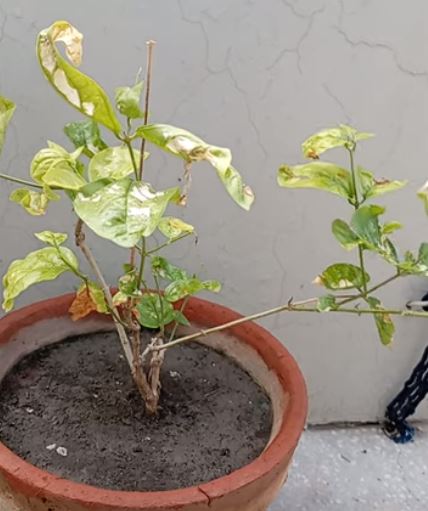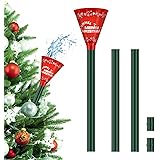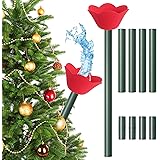Are you worried about your jasmine plant leaves curling? Don’t fret, help is on its way! This article will guide you through the reasons behind this common issue and provide solutions to restore your beloved jasmine plant’s health. If you’ve noticed your jasmine plant leaves curling, it’s essential to understand the possible causes and take appropriate action.
By tackling this problem head-on, you can ensure that your jasmine plant thrives and continues to add beauty and fragrance to your home or garden. So, let’s dive into the world of jasmine plant care, starting with the mystery of curling leaves.
Jasmine Plant Leaves Curling: Causes, Prevention, and Treatment
Jasmine plants are known for their beautiful fragrant flowers and lush green leaves, but what happens when those leaves start to curl? Curling leaves on a jasmine plant can be a cause for concern and indicate an underlying issue that needs to be addressed.
In this article, we will explore the various reasons why jasmine plant leaves may curl, how to prevent it, and the steps you can take to treat and revive your beloved plant.
1. Environmental Factors
Jasmine plants thrive in specific environmental conditions, and any deviations from their preferred environment can cause their leaves to curl. Here are some common environmental factors that can contribute to this issue:
a) Temperature Stress
Jasmine plants prefer warm temperatures ranging between 60°F and 75°F (15°C to 24°C). Extreme heat or cold can stress the plant, resulting in curled leaves. If your jasmine plant is exposed to drafts or cold air, it can cause the leaves to curl as a protective mechanism. Similarly, excessive heat can also lead to leaf curling.
To prevent temperature stress, ensure your jasmine plant is placed in an area with consistent temperatures and protected from drafts. Avoid placing it near air conditioning units or heating vents. If needed, use a humidifier during the winter months to provide sufficient moisture in the air.
Read More: About When to Fertilize After Repotting Your Plants?
b) Humidity Levels
Jasmine plants thrive in environments with moderate to high humidity. Low humidity can cause the leaves to dry out and curl. This is especially common during the winter months when indoor heating systems can dry out the air.
To maintain proper humidity levels, mist the leaves of your jasmine plant with water daily or place a tray filled with water near the plant to increase moisture in the surrounding air. Alternatively, you can use a room humidifier to regulate humidity levels.
c) Light Exposure
Insufficient or excessive light exposure can also lead to curled leaves on a jasmine plant. Lack of sunlight can cause the plant to stretch towards the light source, resulting in weak and curled leaves. On the other hand, excessive direct sunlight can scorch the leaves and cause them to curl as a protective measure.
Place your jasmine plant in a bright location where it can receive indirect sunlight for at least 4-6 hours a day. If the plant is outdoors, provide some shade during the hottest parts of the day to prevent leaf scorching. Indoor growers can also use artificial grow lights to supplement sunlight if necessary.
2. Watering Issues
Water is a crucial factor in maintaining the health of a jasmine plant. Problems with watering can often manifest as curled leaves. Let’s explore the common watering issues that can lead to this problem:
a) Overwatering
Overwatering is a common mistake among plant owners and can cause the roots of the jasmine plant to become waterlogged. This can result in reduced oxygen supply to the roots and lead to leaf curling, as well as yellowing or wilting of the foliage.
To prevent overwatering, allow the top inch (2.5 cm) of soil to dry out before watering again. Ensure proper drainage by choosing a well-draining potting mix and pot with drainage holes. Empty excess water from the saucer or tray to avoid water accumulation.
b) Underwatering
Inadequate watering can also cause jasmine plant leaves to curl. When a jasmine plant doesn’t receive enough water, it conserves moisture by curling its leaves. Underwatering can result in dry and brittle foliage, accompanied by leaf drop.
To avoid underwatering, check the soil moisture regularly by sticking your finger about an inch (2.5 cm) into the soil. If it feels dry, it’s time to water your plant. Water thoroughly, ensuring that water reaches the roots, but avoid leaving the plant sitting in standing water.
3. Nutritional Deficiencies
Jasmine plants require a balanced diet of essential nutrients to thrive. Nutritional deficiencies can weaken the plant and cause leaf curling. Here are some common deficiencies that can lead to this issue:
a) Nitrogen Deficiency
Nitrogen is essential for healthy leaf growth. A lack of nitrogen can result in stunted growth, yellowing, and curling of leaves. Nitrogen deficiency is often characterized by pale green or yellowish leaves.
To address nitrogen deficiency, use a balanced fertilizer with a higher nitrogen content. Follow the instructions on the fertilizer package and apply it as directed. Regularly fertilize your jasmine plant during the growing season to ensure it receives an adequate supply of nitrogen.
b) Potassium Deficiency
Potassium helps plants regulate water content and strengthens cell walls, promoting overall plant health. A potassium deficiency can cause the leaves of a jasmine plant to curl, with older leaves showing signs of necrosis or browning.
To remedy potassium deficiency, apply a fertilizer specifically formulated for blooming plants. These fertilizers often contain higher levels of potassium. Be sure to follow the recommended dosage and frequency of application to avoid over-fertilization.
4. Pests and Diseases
Pests and diseases can also contribute to leaf curling in jasmine plants. Common culprits include spider mites, aphids, whiteflies, and fungal infections. Here’s how to identify and address these issues:
a) Pest Infestation
Inspect your jasmine plant regularly for signs of pests such as webbing, tiny insects, or sticky residue on the leaves. Pests like spider mites and aphids feed on the sap of the plant, causing leaf damage and curling.
To combat pest infestations, gently wash the leaves with a mixture of water and mild soap. Alternatively, you can use an organic insecticidal soap or neem oil spray. Treat the plant thoroughly, focusing on the undersides of the leaves where pests often hide.
b) Fungal Infections
Fungal infections like powdery mildew or leaf spot can weaken the jasmine plant and lead to curled leaves. These infections are often caused by excessive moisture, poor air circulation, or high humidity.
If you notice signs of a fungal infection, remove and destroy the affected leaves to prevent the spread of spores. Improve air circulation around the plant by pruning overcrowded branches and ensuring proper spacing. If necessary, apply a fungicide according to the product instructions.
5. Pruning and Maintenance
Proper pruning and maintenance practices are essential for promoting healthy growth and preventing leaf curling in jasmine plants. Here are some tips:
a) Pruning
Regularly prune your jasmine plant to maintain its shape, remove dead or diseased parts, and encourage new growth. Pruning also improves air circulation and light penetration, reducing the risk of fungal infections.
Use clean and sharp pruning shears to make clean cuts just above a leaf node or bud. Avoid pruning during the flowering period, as it may reduce flower production. Always sanitize your pruning tools to prevent the spread of diseases.
b) Soil Maintenance
Ensure your jasmine plant is potted in well-draining soil to prevent waterlogged roots. Over time, the soil can become compacted, affecting proper drainage. Regularly check the soil and loosen it gently with a fork to maintain good aeration.
Consider repotting your jasmine plant every 2-3 years to replenish the soil and provide fresh nutrients. Choose a pot that is slightly larger than the current one and use a well-draining potting mix suitable for jasmine plants.
c) Regular Inspections
Keep a close eye on your jasmine plant and inspect it regularly for any signs of distress or changes in leaf appearance. Early detection of issues can help prevent further damage. Promptly address any concerns by adjusting environmental conditions, watering practices, or treating pests and diseases.
By addressing these factors and taking the necessary steps, you can help prevent and treat curled leaves on your jasmine plants. Remember, each jasmine plant is unique, and it may require some trial and error to find the perfect balance of care. With patience and diligence, your jasmine plant will regain its vitality, rewarding you with its delightful fragrance and lush foliage.
Read More: About Marble Queen Pothos Losing Variegation?
Frequently Asked Questions (FAQs)
Jasmine plant leaves curling can be caused by various factors, such as pest infestation, inadequate watering, nutrient deficiencies, temperature stress, or improper sunlight exposure.
Look for signs of pests like aphids, spider mites, or whiteflies on the leaves. Inspect the undersides of the curling leaves for tiny insects or sticky residue, which indicate a pest problem.
To control pests, you can use insecticidal soap or neem oil spray. Make sure to follow the instructions on the product label and treat your plant accordingly.
Jasmine plants prefer slightly moist soil. It is essential to water them thoroughly whenever the top inch of soil feels dry. However, avoid overwatering, which can lead to root rot and curling leaves.
Deficiencies in essential nutrients like nitrogen, potassium, or iron can cause leaf curling. Conduct a soil test to determine the specific nutrient deficiency and treat it with appropriate fertilizers.
Yes, extreme temperature fluctuations, especially cold drafts or sudden heatwaves, can stress jasmine plants and result in curling leaves. Ensure your plant is placed in an environment with consistent temperatures.
Insufficient or excessive sunlight can both lead to leaf curling in jasmine plants. Ensure your plant receives adequate indirect sunlight, preferably 4-6 hours a day, to avoid leaf curling.
Besides the common causes mentioned above, factors like improper pruning, disease infection, or improper humidity levels can also contribute to jasmine plant leaf curling. Assess these factors and take appropriate measures to maintain plant health.
Final Thoughts
Jasmine plant leaves curling could indicate a variety of issues that need to be addressed promptly. Firstly, check for pests such as aphids or spider mites, as they can cause leaf distortion. Treat the infestation with insecticidal soap or diluted neem oil.
Additionally, evaluate the watering routine, as over or under-watering can lead to curling leaves. Adjust watering frequency and ensure proper drainage. Lastly, consider the environmental conditions like temperature and humidity. Provide adequate sunlight and maintain a consistent environment to promote healthy growth. Overall, addressing these factors will help rectify the issue of jasmine plant leaves curling.
Auto Amazon Links: No products found.
Perfect Plants Christmas Tree Saver 8oz. | Easy Use Xmas Tree Preserver Food | Have Healthy Green Christmas Trees All Holiday Season
$9.97 (as of December 8, 2025 01:01 GMT +00:00 - More info- Product prices and availability are accurate as of the date/time indicated and are subject to change. Any price and availability information displayed on [relevant Amazon Site(s), as applicable] at the time of purchase will apply to the purchase of this product.
Kaiedos Christmas Tree Watering Funnel - 39 Inch Funnel, Reusable Design, Makes Watering Your Live Tree a Snap!
$14.99 (as of December 8, 2025 01:01 GMT +00:00 - More info- Product prices and availability are accurate as of the date/time indicated and are subject to change. Any price and availability information displayed on [relevant Amazon Site(s), as applicable] at the time of purchase will apply to the purchase of this product.
Forest Fresh Christmas Tree Preservative Tablets – Tree Water Additive for Live Fresh-Cut Trees – Keeps Trees Hydrated and Reduces Needle Drop – Non-Toxic, Made in USA – 1 Packet (8 Tablets)
$5.99 (as of December 8, 2025 01:01 GMT +00:00 - More info- Product prices and availability are accurate as of the date/time indicated and are subject to change. Any price and availability information displayed on [relevant Amazon Site(s), as applicable] at the time of purchase will apply to the purchase of this product.
Christmas Tree Watering Funnel-39 Inch Adjustable 3-Section Long Funnel Spout Funnel Watering System Xmas Plant Watering Tool for Large Indoor Outdoor Plants
$14.59 (as of December 8, 2025 01:01 GMT +00:00 - More info- Product prices and availability are accurate as of the date/time indicated and are subject to change. Any price and availability information displayed on [relevant Amazon Site(s), as applicable] at the time of purchase will apply to the purchase of this product.
EZMeetU Christmas Tree Watering Funnel, 47 Inch Flower Shape Adjustable 6 Section Design, Christmas Tree Watering System, Christmas Tree Waterer, Long Funnel Wide Opening Reusable, Plant Watering Tool
$15.99 (as of December 8, 2025 01:01 GMT +00:00 - More info- Product prices and availability are accurate as of the date/time indicated and are subject to change. Any price and availability information displayed on [relevant Amazon Site(s), as applicable] at the time of purchase will apply to the purchase of this product.
Muddy Mat® Shown on TV Super Absorbent Microfiber Dog Door Mat for Muddy Paws, Non-Slip Washable Pet Rug, Quick Dry Chenille Entryway Carpet, Machine Washable Indoor Outdoor mat, Grey 30"x19"
$24.95 (as of December 8, 2025 17:23 GMT +00:00 - More info- Product prices and availability are accurate as of the date/time indicated and are subject to change. Any price and availability information displayed on [relevant Amazon Site(s), as applicable] at the time of purchase will apply to the purchase of this product.
Snow Joe Premium Enviro Blend Ice Melt, Green-Coated Deicer Crystals, 50 lb - Safer Melter for Vegetation, Concrete & Metals w/ Anti-Corrosion Calcium Magnesium Acetate
$32.97 (as of December 8, 2025 17:23 GMT +00:00 - More info- Product prices and availability are accurate as of the date/time indicated and are subject to change. Any price and availability information displayed on [relevant Amazon Site(s), as applicable] at the time of purchase will apply to the purchase of this product.
Zevo Flying Insect Trap Official Refill Cartridges - Fits Both Zevo Trap & MAX Indoor Fly Trap - Authentic Trap+Lock Technology to Catch Gnats, House & Fruit Flys (4 Official Refill Cartridges)
$14.97 (as of December 8, 2025 17:23 GMT +00:00 - More info- Product prices and availability are accurate as of the date/time indicated and are subject to change. Any price and availability information displayed on [relevant Amazon Site(s), as applicable] at the time of purchase will apply to the purchase of this product.
OLANLY Dog Door Mat for Muddy Paws 30x20, Absorbs Moisture and Dirt, Absorbent Non-Slip Washable Doormat, Quick Dry Chenille Mud Mat for Dogs, Entry Indoor Entryway Carpet for Inside Floor, Grey
$9.99 (as of December 8, 2025 17:23 GMT +00:00 - More info- Product prices and availability are accurate as of the date/time indicated and are subject to change. Any price and availability information displayed on [relevant Amazon Site(s), as applicable] at the time of purchase will apply to the purchase of this product.
Advion Cockroach Gel Bait, 4 Tubes x 30-Grams, 1 Plunger and 2 Tips, German Roach Insect Pest Control, Indoor and Outdoor Use, Roach Killer Gel for American, German and Other Major Cockroach Species
$26.46 (as of December 8, 2025 17:23 GMT +00:00 - More info- Product prices and availability are accurate as of the date/time indicated and are subject to change. Any price and availability information displayed on [relevant Amazon Site(s), as applicable] at the time of purchase will apply to the purchase of this product.











